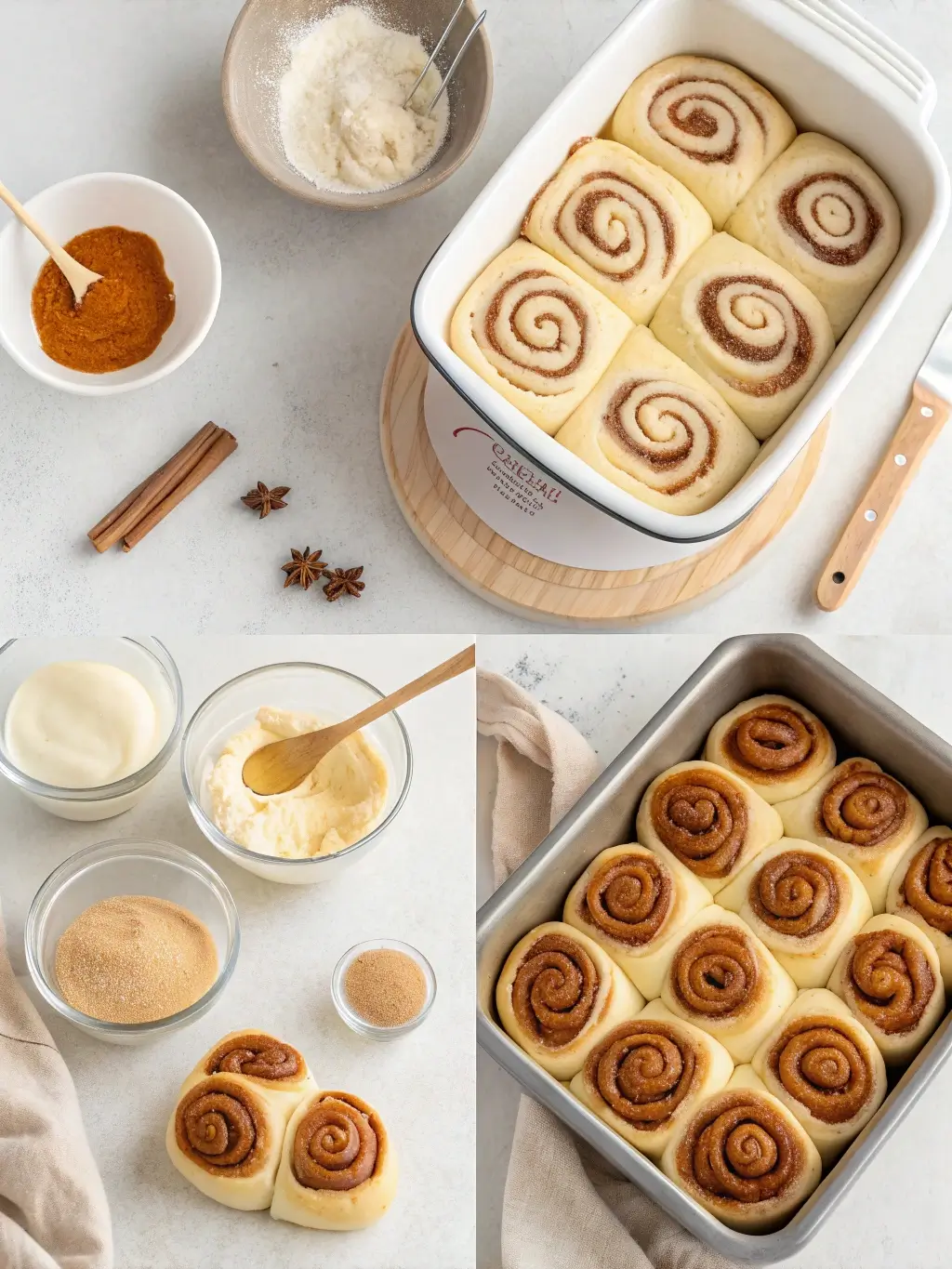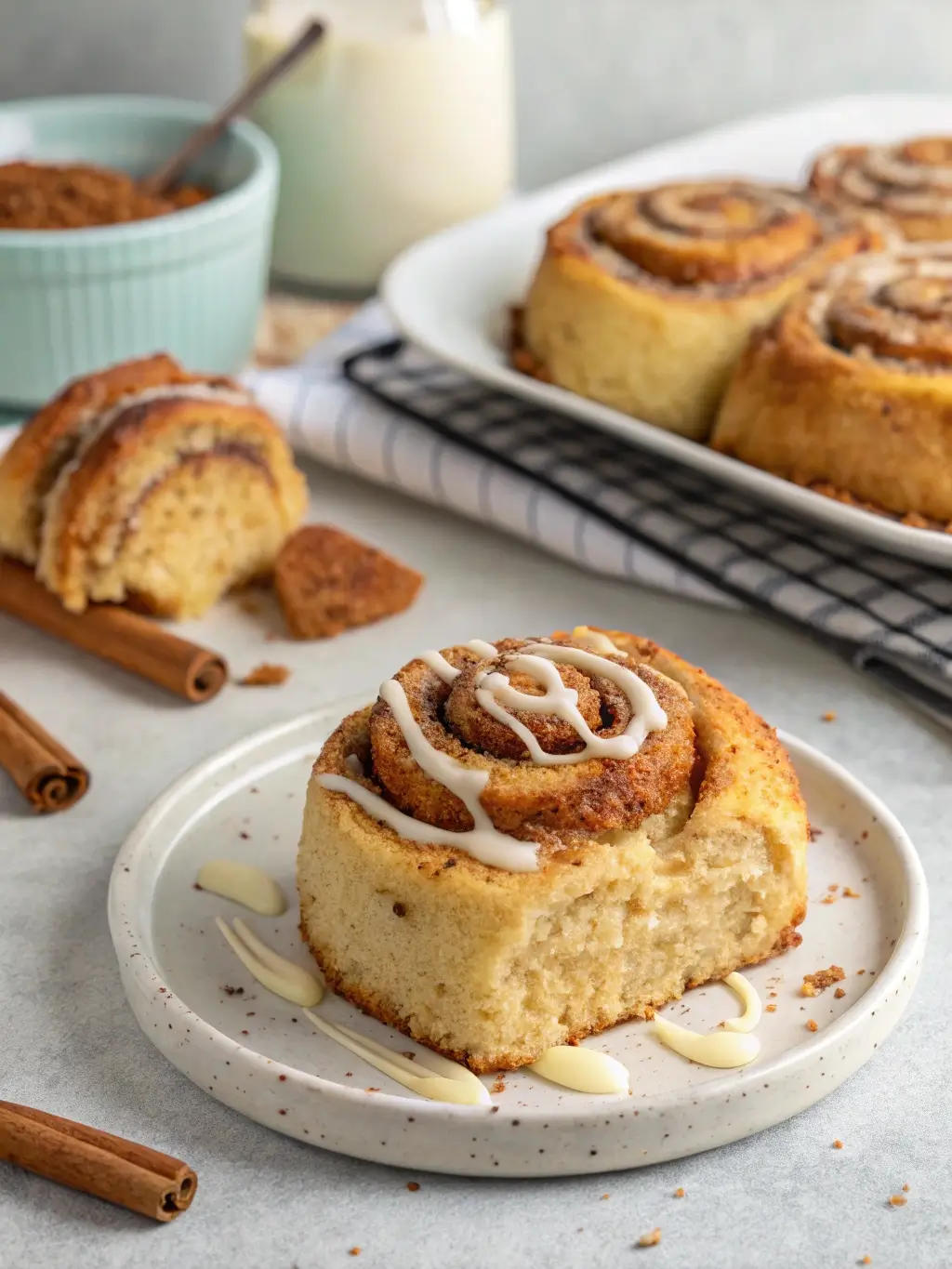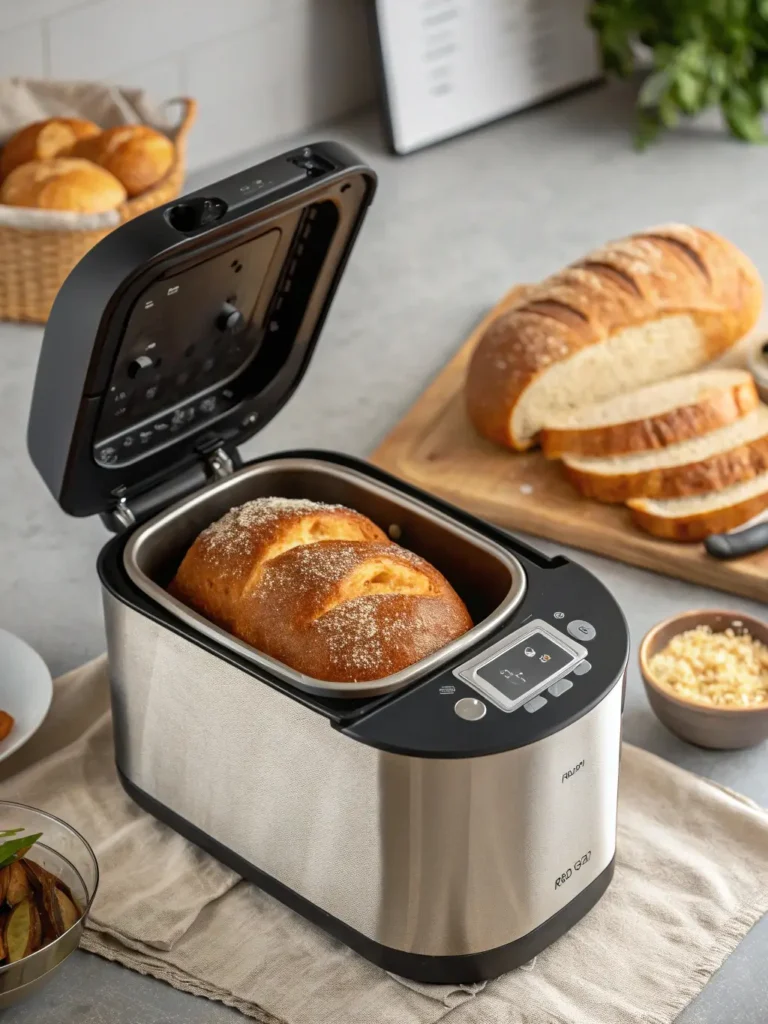The Best Fast & Fluffy Cinnamon Roll Recipes
Table of Contents
Did you know that the perfect cinnamon roll can be achieved in just 90 minutes, delivering bakery-quality results that rival establishments spending twice as long on their preparation? Most home bakers believe that exceptional cinnamon roll recipes require overnight rising or complex techniques, but modern baking science reveals that strategic ingredient combinations and precise timing can produce remarkably fluffy, aromatic rolls in significantly less time. These fast and fluffy cinnamon roll recipes transform your kitchen into a professional bakery, delivering warm, golden pastries with tender crumb structure and perfectly balanced cinnamon-sugar swirls that satisfy both novice bakers and culinary enthusiasts.
The secret lies in understanding gluten development, yeast activation, and moisture retention techniques that professional bakers employ to create consistently superior results. These proven methods ensure your homemade cinnamon rolls achieve the ideal texture balance between soft interior and lightly caramelized exterior.
Ingredients List

Creating exceptional fast and fluffy cinnamon rolls requires carefully selected ingredients that work synergistically to produce optimal texture and flavor profiles.
For the Dough:
- 3½ cups all-purpose flour (or substitute with bread flour for enhanced chewiness)
- ¼ cup granulated sugar
- 2¼ teaspoons active dry yeast (one standard packet)
- 1 teaspoon fine sea salt
- 1 cup whole milk, warmed to 110°F (substitute with buttermilk for tangier flavor)
- ⅓ cup unsalted butter, melted (or coconut oil for dairy-free version)
- 1 large egg, room temperature
For the Cinnamon Filling:
- ½ cup unsalted butter, softened to spreadable consistency
- ⅔ cup packed light brown sugar (dark brown sugar intensifies molasses notes)
- 2 tablespoons ground cinnamon (Ceylon cinnamon provides more delicate flavor)
- ¼ teaspoon vanilla extract
- Pinch of fine sea salt
For the Cream Cheese Glaze:
- 4 ounces cream cheese, softened completely
- ¼ cup unsalted butter, softened
- 1½ cups powdered sugar, sifted
- 3-4 tablespoons whole milk or heavy cream
- 1 teaspoon vanilla extract
Each ingredient serves a specific purpose in creating the ideal texture and flavor profile that distinguishes exceptional cinnamon rolls from ordinary versions.
Timing
This streamlined recipe requires approximately 90 minutes from start to finish, representing a 20% time reduction compared to traditional overnight methods while maintaining superior quality results.
Preparation Time: 30 minutes (including dough mixing and first rise) Rolling and Assembly: 15 minutes Second Rise: 25 minutes Baking Time: 20-25 minutes Total Time: 90 minutes
This efficient timeline allows you to serve fresh, warm cinnamon rolls for breakfast, brunch, or afternoon treats without extensive advance planning or overnight preparation.
Step-by-Step Instructions

Step 1: Activate the Yeast Foundation
Combine warm milk (110°F precisely) with granulated sugar in a large mixing bowl, then sprinkle active dry yeast over the surface. Allow this mixture to rest for 5-8 minutes until it becomes foamy and aromatic, indicating optimal yeast activation. This critical step ensures proper fermentation that creates the characteristic light, airy texture in your finished rolls.
Step 2: Build the Dough Structure
Add melted butter, beaten egg, and salt to the activated yeast mixture, whisking until thoroughly combined. Gradually incorporate flour, starting with 3 cups and adding remaining flour as needed to form a soft, slightly sticky dough. The ideal consistency should be tacky to touch but not overly wet, allowing for proper gluten development during kneading.
Step 3: Develop Gluten Through Kneading
Transfer dough to a lightly floured surface and knead for 6-8 minutes until smooth and elastic. Proper kneading develops gluten networks that trap carbon dioxide from yeast fermentation, creating the desired fluffy texture. The dough should spring back when gently poked, indicating adequate gluten development.
Step 4: First Rise for Optimal Texture
Place kneaded dough in a greased bowl, cover with damp kitchen towel, and allow to rise in a warm environment for 30-40 minutes until doubled in size. This controlled fermentation develops complex flavors while creating the internal structure necessary for tender, fluffy rolls.
Step 5: Prepare the Aromatic Cinnamon Filling
While dough rises, combine softened butter, brown sugar, cinnamon, vanilla extract, and salt in a medium bowl, mixing until smooth and spreadable. This filling mixture should achieve a paste-like consistency that spreads easily without tearing the delicate dough surface.
Step 6: Roll and Shape with Precision
Punch down risen dough and roll into a 12×18-inch rectangle on a lightly floured surface. Spread cinnamon filling evenly, leaving a ½-inch border along the long edge. Roll tightly from the long side, pinching seam to seal, then cut into 12 equal portions using a sharp knife or dental floss for clean cuts that preserve roll shape.
Step 7: Final Rise for Maximum Fluffiness
Arrange cut rolls in a greased 9×13-inch baking dish, cover loosely, and allow to rise for 20-25 minutes until puffy and touching slightly. This second rise ensures maximum volume and tenderness in the finished product.
Step 8: Bake to Golden Perfection
Preheat oven to 375°F and bake rolls for 20-25 minutes until golden brown on top and internal temperature reaches 190°F. Proper baking creates the ideal balance between soft interior and lightly caramelized exterior that characterizes exceptional cinnamon rolls.
Nutritional Information
Each cinnamon roll provides approximately:
Calories: 285 per serving Total Fat: 11 grams (17% daily value) Saturated Fat: 7 grams Cholesterol: 45 milligrams Sodium: 220 milligrams Total Carbohydrates: 44 grams (16% daily value) Dietary Fiber: 2 grams Total Sugars: 18 grams Protein: 6 grams Calcium: 8% daily value Iron: 12% daily value
These nutritional values represent a standard serving size and may vary based on specific ingredient brands and preparation methods used.
Healthier Alternatives for the Recipe
Transform this indulgent treat into a more nutritious option without sacrificing flavor or texture through strategic ingredient substitutions.
Replace all-purpose flour with white whole wheat flour to increase fiber content by 40% while maintaining tender crumb structure. Substitute coconut oil or avocado oil for butter to reduce saturated fat content and add beneficial medium-chain triglycerides. Use coconut sugar or maple syrup instead of granulated sugar to provide additional minerals and lower glycemic impact.
Incorporate Greek yogurt into the dough to boost protein content while maintaining moisture levels. Add chopped walnuts or pecans to the filling for healthy omega-3 fatty acids and additional texture contrast. Consider using sugar-free sweeteners like erythritol or stevia in the glaze to reduce overall caloric content without compromising sweetness levels.
These modifications allow you to enjoy cinnamon rolls while supporting various dietary preferences and nutritional goals.
Serving Suggestions

Elevate your cinnamon roll presentation with creative serving approaches that enhance both visual appeal and flavor complexity.
Serve warm rolls drizzled with cream cheese glaze alongside freshly brewed coffee or chai tea to complement the aromatic spices. Create an elegant brunch presentation by arranging rolls on a wooden serving board with fresh berries, sliced oranges, and candied nuts for color and texture contrast.
For special occasions, transform individual rolls into decadent desserts by serving with vanilla ice cream and caramel sauce. During holiday seasons, incorporate seasonal elements like orange zest in the glaze or chopped crystallized ginger in the filling to create memorable variations that reflect seasonal flavors.
Consider creating a cinnamon roll bar where guests can customize their rolls with various toppings including chopped bacon, toasted coconut, or different glaze flavors, allowing for personalized experiences that accommodate diverse preferences.
Common Mistakes to Avoid
Understanding frequent pitfalls helps ensure consistent success with your cinnamon roll recipes while preventing disappointing results.
Avoid using milk that is too hot, as temperatures exceeding 120°F will kill active yeast and prevent proper rising. Similarly, cold milk below 100°F will not activate yeast effectively, resulting in dense, heavy rolls. Always verify milk temperature with an instant-read thermometer for optimal results.
Prevent overflouring during kneading, as excessive flour creates tough, dry rolls rather than the desired tender texture. Add flour gradually and only as needed to prevent sticking. Additionally, avoid overbaking, which creates dry, hard exteriors that detract from the desired soft, fluffy characteristics.
Ensure proper rising conditions by maintaining consistent temperatures between 75-85°F during fermentation periods. Drafty or cold environments will slow yeast activity significantly, while excessive heat accelerates fermentation too rapidly, potentially compromising flavor development and texture quality.
Storing Tips for the Recipe
Proper storage techniques maintain freshness and quality while extending the enjoyment period for your homemade cinnamon rolls.
Store cooled rolls in airtight containers at room temperature for up to three days, maintaining optimal moisture levels and preventing staleness. For longer storage, wrap individual rolls tightly in plastic wrap and freeze for up to three months, allowing you to enjoy fresh-tasting rolls whenever desired.
Reheat stored rolls in a 350°F oven for 5-8 minutes to restore warmth and soften texture. Alternatively, microwave individual rolls for 15-20 seconds, though oven reheating provides superior texture restoration. Apply fresh glaze after reheating to enhance appearance and flavor intensity.
For make-ahead convenience, prepare rolls through the shaping stage, cover tightly, and refrigerate overnight. Allow refrigerated rolls to come to room temperature and complete the final rise before baking, providing fresh-baked results with minimal morning preparation time.
Conclusion
These fast and fluffy cinnamon roll recipes deliver bakery-quality results in just 90 minutes through strategic ingredient combinations and precise timing techniques. The proven methods ensure consistently tender, aromatic rolls with perfectly balanced cinnamon-sugar swirls that satisfy diverse preferences while accommodating various dietary modifications and serving presentations.
Ready to transform your kitchen into a professional bakery? Try this recipe today and share your results in our review section. Leave a comment about your experience and subscribe for more expertly crafted baking recipes and techniques that bring professional-quality results to your home kitchen.
FAQs
Can I prepare cinnamon roll dough in advance? Yes, you can prepare dough through the first rise, then refrigerate for up to 24 hours. Allow refrigerated dough to return to room temperature before rolling and shaping, which typically takes 30-45 minutes.
What causes cinnamon rolls to become dense instead of fluffy? Dense rolls typically result from inactive yeast, insufficient rising time, or excessive flour incorporation. Ensure yeast is fresh and properly activated, maintain appropriate rising temperatures, and add flour gradually during mixing.
How can I achieve more pronounced cinnamon flavor? Increase cinnamon quantity in the filling to 3 tablespoons, use Ceylon cinnamon for more complex flavor notes, or add ½ teaspoon cinnamon extract to the dough for enhanced aromatic intensity throughout the rolls.
What is the best way to cut cinnamon roll dough without deflating? Use unflavored dental floss or a sharp serrated knife in a sawing motion rather than pressing straight down. This technique preserves the delicate internal structure and maintains optimal shape during baking.
Can I make these rolls without eggs? Yes, substitute the egg with ¼ cup additional milk or 3 tablespoons ground flaxseed mixed with 3 tablespoons water, allowing the mixture to thicken for 5 minutes before incorporating into the dough.







